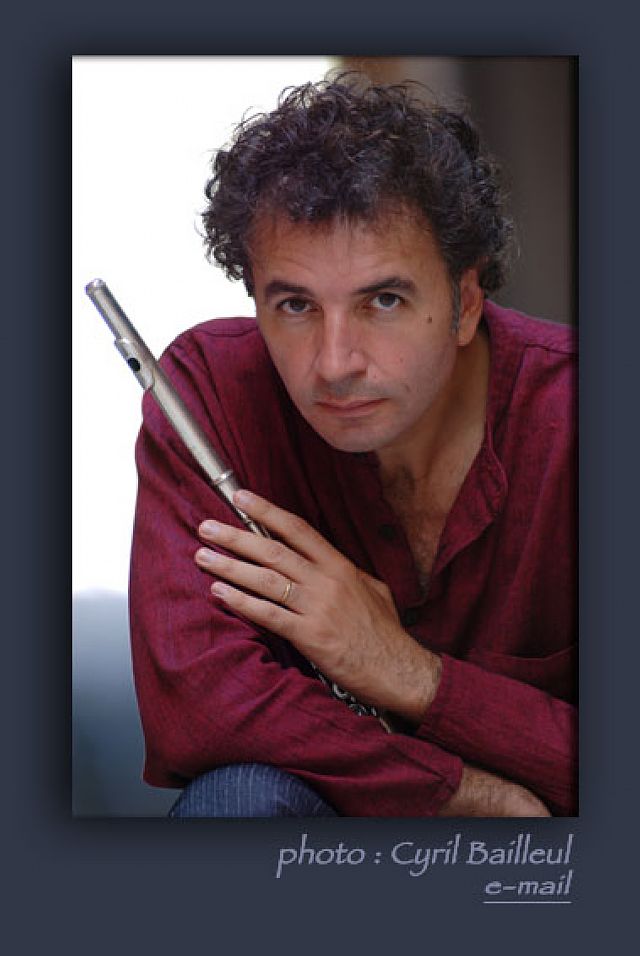Jean Ferrandis
Naast een fantastisch fluitist is de Fransman Jean Ferrandis ook een bijzonder inspirerende pedagoog. Hij geeft o.a. les aan de Ecole Normale Superieure de Musiwue te Parijs en we zijn erg blij met zijn komst.
Jean Ferrandis
Chance had it that he became a flutist, but any instrument would have been suitable.
Borna musician as some are born blond or brown-haired, Jean Ferrandis simply needed a tool to express himself. Why the flute? And why not….Though the flute in itself did not interest him – the violin or the piano would probably not have done any better! Jean Ferrandis nevertheless soon became one of the infallible virtuosos, whose supreme elegance exists in rendering the technique invisible, so as to lend free hand to expression. And, in fine, it is the flute that one rediscovers through him, an instrument used as a voice and freed of its impulsive image.
Jean Ferrandis’ flute goes to the core that is music. It matters little, then, to know for whom or for what music is meant, when it is so well served.
After receiving a first prize at the Conservatoire National Superieur de Musique in Lyon, in Maxence Larrieu’s class, Jean became laureate of the Maria Canals competition in
Barcelona, the Munich Competition, the Prague Spring Festival Competition, and finalist
of the Young Concert Artists in New York. The flute decidedly tries to charm him, but he
still does not take her seriously.
“It is Pan himself.” This sublime compliment, from the mouth of Leonard Bernstein as
Jean Ferrandis played under his direction, as well as a cadenza composed by the master for him, would not alter this.
With no other career plan than to let himself be carried by life, friendship, and his desire for music, Jean Ferrandis travels a lot. In Russia, the United States, Japan, or Korea, he gives concerts and master classes and takes advantage of these travels to meet fellow citizens of our planet Earth.
He plays in prestigious concert halls such as Wigmore Hall – London, La Fenice – Venice, Hamarikyu Hall – Tokyo, and Theatre des Champs Elysees in Paris.
He chooses his chamber music partners according to human and musical affinities: Jean
Philippe Collard, Henri Demarquette, Ivry Gitlis, Jean Marc Luisada, Emile Naoumoff,
Marielle Nordmann, Gerard Poulet, Caroline Sageman, Dominique de Williencourt, and
Michel Michalakakos.
At the Ecole Normale Superieure de Musique, he teaches the art of living through music as much as he does the subtleties of the flute.
